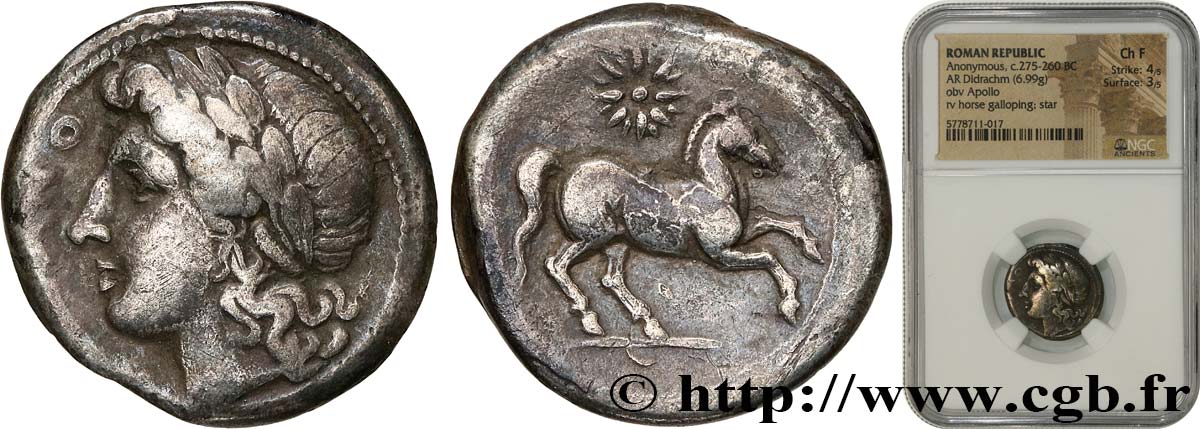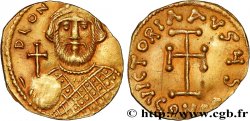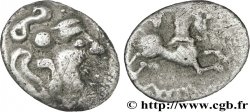Live auction - brm_639562 - ROMAN REPUBLIC - ANONYMOUS Didrachme
You must signin and be an approved bidder to bid, LOGIN TO BID. Accounts are subject to approval and the approval process takes place within 48 hours. Do not wait until the day a sale closes to register. Clicking on "BID" constitutes acceptance of the terms of use of cgb.fr private live auctions.
Bids must be placed in whole Euro amounts only. The sale will start closing at the time stated on the item description; any bids received at the site after the closing time will not be executed. Transmission times may vary and bids could be rejected if you wait until the last second. For further information check the Live auction FAQ
All winning bids are subject to a 18% buyer’s fee.
All winning bids are subject to a 18% buyer’s fee.
| Estimate : | 1 800 € |
| Price : | 940 € |
| Maximum bid : | 1 800 € |
| End of the sale : | 15 June 2021 14:36:57 |
| bidders : | 3 bidders |
Type : Didrachme
Date: c. 275-270 AC.
Mint name / Town : Roma
Metal : silver
Diameter : 20 mm
Orientation dies : 5 h.
Weight : 7,00 g.
Rarity : R3
Slab

NGC :
Coments on the condition:
Monnaie centrée à l’usure régulière. Joli revers. Patine grise
Catalogue references :
RCV.23 (2400$) - BMC/RR.19 - CRR.4 (5) - RRC.15 /1b - RSC.6a (480£) - MRR.19 (2000€) - HN. Italy275 - (1900€)
Predigree :
Exemplaire sous coque NGC F (Strike 4/5 et Surface 3/5)
Obverse
Obverse legend : ROMANO.
Obverse description : Tête laurée d’Apollon à gauche, les cheveux longs tombant sur la nuque.
Obverse translation : (aux Romains).
Reverse
Reverse legend : ANÉPIGRAPHE.
Reverse description : Cheval libre bondissant à droite ; au-dessus de la croupe, astre rayonnant à quinze rais.
Reverse translation : “Roma”, (Rome).
Commentary
Pour ce type, M. Crawford a relevé une estimation de dix coins de droit et neuf coins de revers. M. Crawford signale d’autre part que le poids moyen est de 7,21 g pour cinquante huit exemplaires pesés. Ce type est l’un des plus rares du monnayage romain d’origine grecque. Sur notre exemplaire le nombre de rayons sur l’étoile est de quinze au lieu de seize. D’autre part N. K. Rutter place sa fabrication plutôt dans les années 260 avant J.-C. au moment où débute la première guerre Punique.








 Report a mistake
Report a mistake Print the page
Print the page Share my selection
Share my selection Ask a question
Ask a question Consign / sell
Consign / sell










